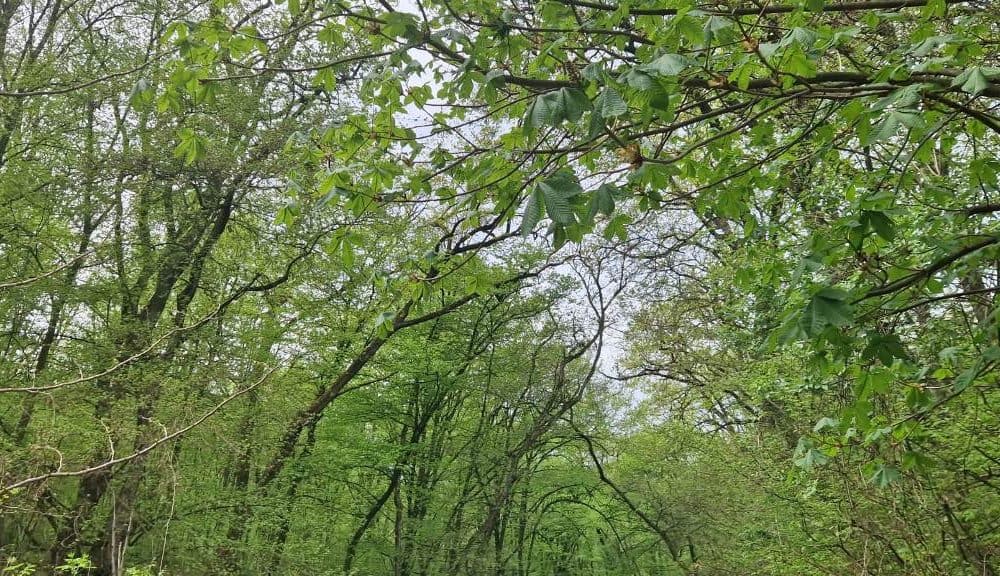#Ancient #Earths #Crust #Billion #Years
Jakarta –
A new geological study from the University of Copenhagen reveals that the oldest Scandinavian bedrock comes from Greenland. This discovery highlights the formation of continents and the uniqueness of the existence of life on Earth compared to other planets in our Solar System.
In a remote area of Finland, nestled among some of the oldest mountains in Northern Europe, scientists discovered traces of a previously hidden part of the Earth’s crust that go back more than three billion years and head north towards Greenland.
These traces were found in the mineral zircon, which after chemical analysis, showed researchers from the Department of Geosciences and Natural Resource Management that the ‘foundations’ on which Denmark and Scandinavia rest, were probably ‘born’ from Greenland around 3.75 billion years ago.
“Our data shows that the oldest part of the Earth’s crust beneath Scandinavia originates from Greenland and is around 250 million years older than we previously thought,” said Professor Tod Waight, a geologist in the Department of Geosciences and Natural Resource Management.
The researchers’ study of zircon shows that, in some respects, its chemical fingerprint matches that of some of the oldest rocks on the planet found in the North Atlantic Craton in West Greenland.
“The zircon crystals we found in river sand and rocks in Finland have signatures that suggest they are much older than anything ever found in Scandinavia, and also match the age of rock samples in Greenland,” said Andreas Petersson, Department researcher of Geosciences and Natural Resource Management, quoted from SciTechDaily.
“At the same time, the results of three independent isotope analyzes confirm that the Scandinavian bedrock is most likely related to Greenland,” he continued.
A water world without oxygen
Denmark, Sweden, Norway, and Finland sit atop a section of the Earth’s crust known as the Fennoscandian Shield, or Baltic Shield.
Researchers believe that this country broke away from Greenland as a ‘seed’ and moved over hundreds of millions of years to find itself in today’s Finland.
Here, the plate grew along with the accumulation of new geological material around it, until it became Scandinavia. At the time the Earth’s crust broke away from Greenland, the planet looked very different than it does today.
“Earth may have been a watery planet, like in the film Waterworld, but without oxygen in its atmosphere and without a crust that appeared. But, because it happened so far in the past, we can’t be sure what it actually looked like,” said Professor Waight.
According to the researchers, the fact that Earth even has a continental crust consisting of granite is quite special when they look into space and compare it with other planets in our galactic neighborhood.
“This is unique in our Solar System. And, evidence of liquid water and a granite crust are key factors in efforts to identify habitable exoplanets and the possibility of life beyond Earth,” explained Petersson.
Continents are the key to life
The new study adds another piece to the continent’s primordial puzzle that began long before life on Earth really developed, but has largely paved the way for human and animal life.
“Understanding how continents form helps us understand why our planet is the only planet in the Solar System that has life on it. Because without the continents and the constant water between them, we wouldn’t be here. It’s true, continents influence currents ocean and climate, which are vital for life on Earth,” Petersson said.
In addition, the new research contributes to a growing body of research that rejects the ways in which continents grew, especially during the first billion years of Earth’s history.
“The most commonly used model assumes that Earth’s continental crust began to form when the planet formed, about 4.6 billion years ago. In contrast, our study and several other recent studies suggest that chemical signatures indicating the growth of new continental crust can be identified around a billion years later. This means that we may need to revise much of our thinking about how early continents evolved,” Professor Waight said.
At the same time, the results of this research add to previous research which found similar ‘seeds’ from the ancient Earth’s crust in other parts of the world.
“Our study gives us other important clues about the mystery of how continents formed and spread across the Earth, especially in the case of the Fennoscandian Shield. But there is still much we don’t know,” explained Professor Waight.
“In Australia, South Africa and India, for example, similar seeds have been found, but we are not sure whether they came from the same birthplace, or whether they originated independently of each other in several places on Earth. This is something which we want to investigate further using the methods we used in this study,” Professor Waight concluded.
Watch the video “Geological Agency Opens Up About the ‘New Mountain’ Phenomenon in Grobogan, Central Java”
(rns/rns)









